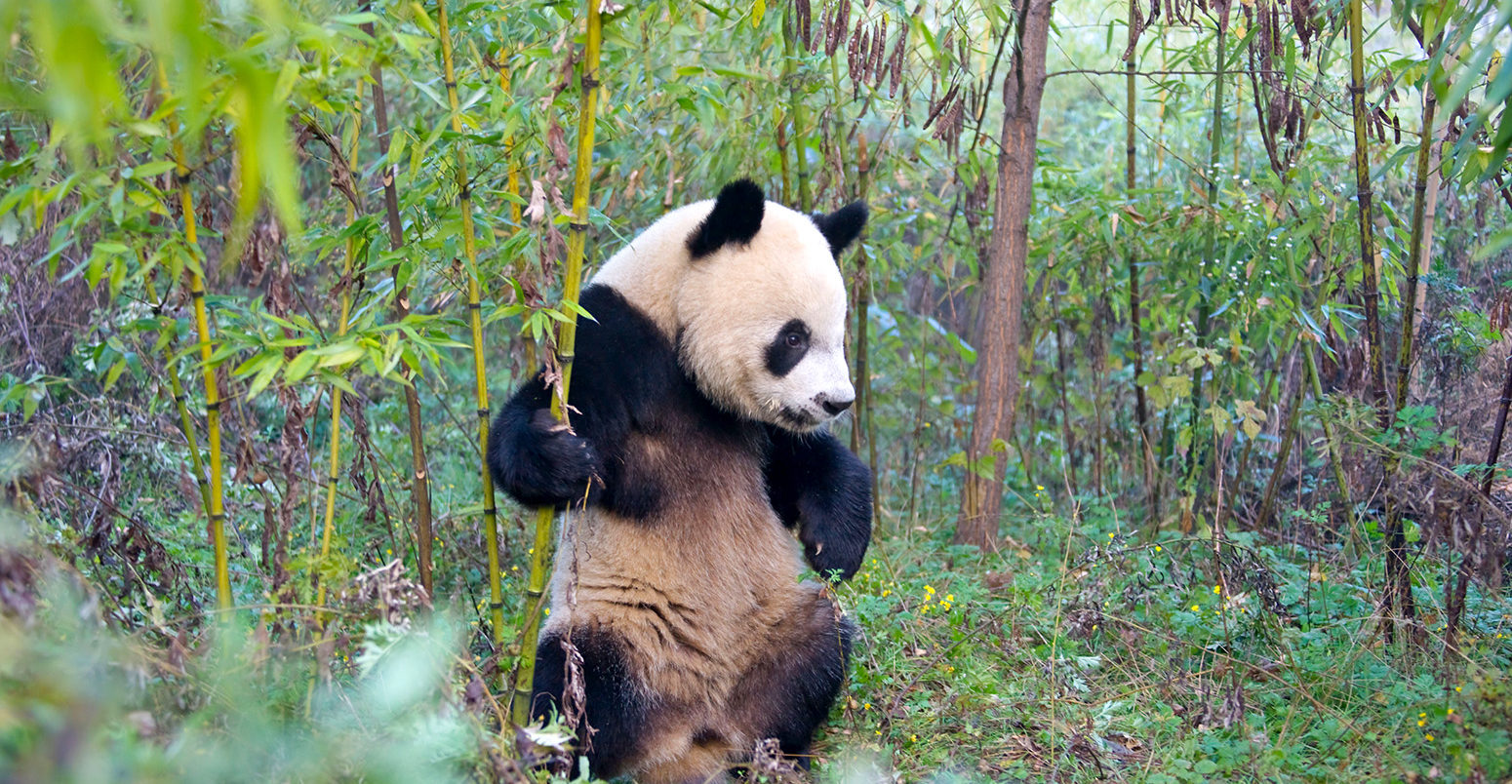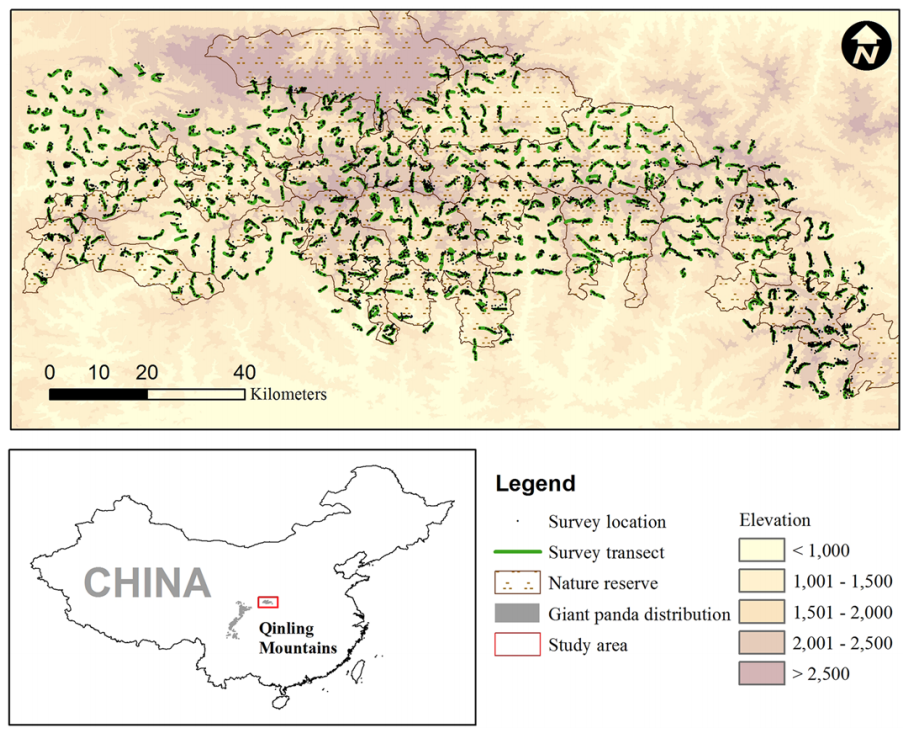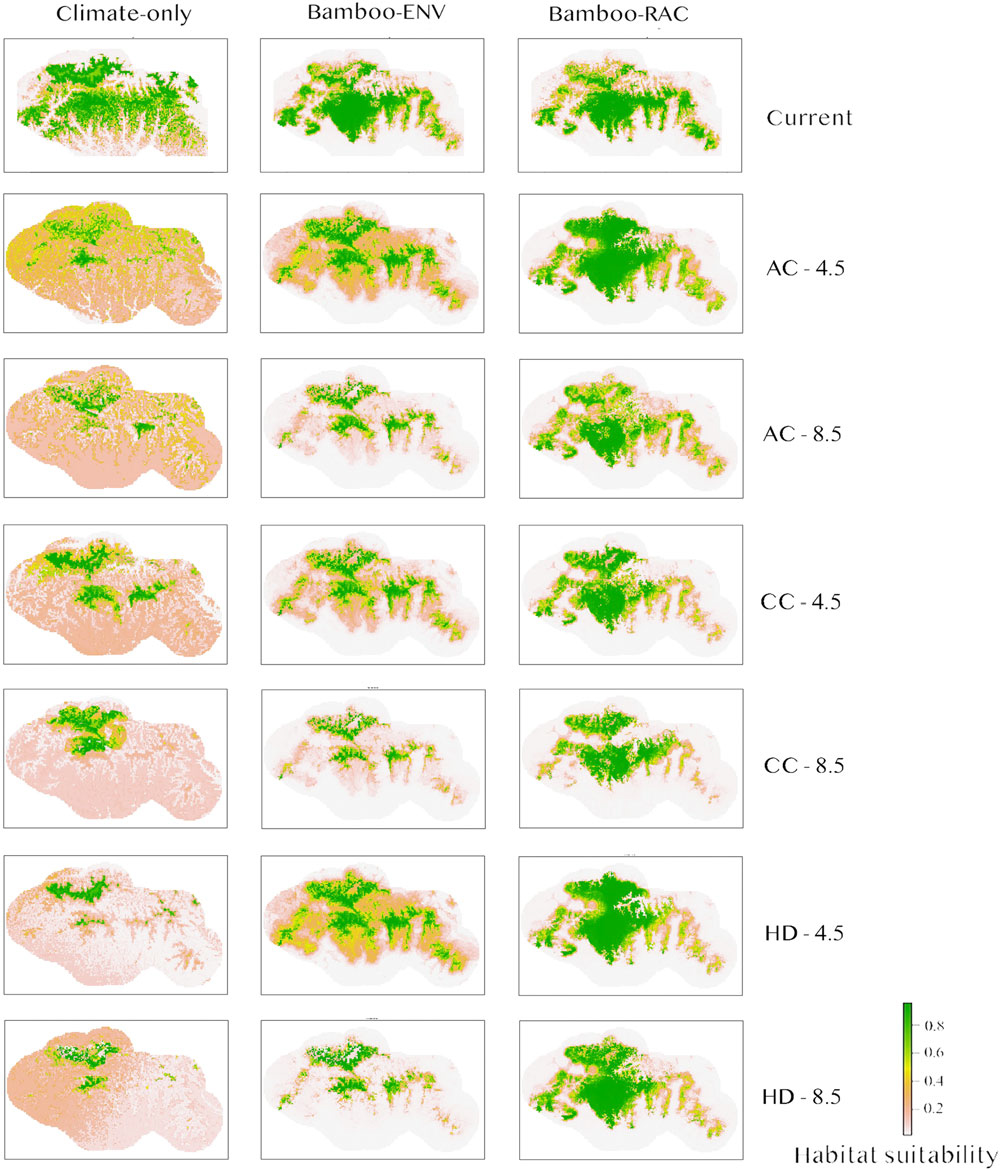
Climate change not the only threat to giant pandas, study says
Seán Thór Herron
08.07.18Seán Thór Herron
07.08.2018 | 11:34amClimate change could play a smaller role in determining future giant panda populations than previously thought, a new study suggests.
This is because other important factors affecting panda distribution, such as farming, tourism and the local distribution of bamboo plants, may have previously been underestimated, the research shows.
The researchers find that, when climate change alone is considered, the amount of land available to pandas in the Qinling mountains of China – which is home to 17% of all wild pandas – is expected to shrink by 49-85% by 2080. However, when the other factors are also considered, the amount of available habitat is expected to fall by a smaller 12-34%.
The results imply that previous studies may have “overestimated the effects of climate change on pandas and led to inappropriate conservation recommendations” in this region, a study author tells Carbon Brief.
However, climate change mitigation should remain an important part of future panda conservation efforts, the researchers add.
Into the woods
Giant pandas face a number of threats, including from poaching and habitat destruction for farming and tourism. They are currently considered “vulnerable” to extinction by the International Union for the Conservation of Nature’s Red List.
Previous research shows that pandas are also uniquely threatened by climate change. The animals live on a diet made up almost entirely of bamboo. However, research suggests that warming temperatures could force bamboo forests to move to higher ground where temperatures are cooler – leaving the pandas with nothing to eat.
Yet, the new study, published in the journal Conservation Letters, suggests that previous research may have “overestimated” the effect of climate change on panda habitats.
This is because such studies may have overlooked the role of other factors that can affect where the animals can live, says study author Dr Qing Zhao, a postdoctoral researcher at the University of Missouri. He tells Carbon Brief:
“Our work aims to understand the threats to the panda, and provide appropriate and useful suggestions for the conservation of this species. For this purpose, we first consider a wide range of variables – not just climate, but also human activities and bamboo distributions – when modelling panda distribution.”
Forest forecast
For the study, the researchers used modelling to project how the distribution of giant pandas in the Qinling mountains of China is likely to change by 2080.
The researchers first modelled current and future bamboo plant distributions using three global climate models.
For the models, the scientists used current panda and bamboo distribution data from the Shaanxi Forestry Department, based on surveys along stretches of land – known as “transects” – totalling approximately 1,360km in length.
Bamboo was “present” if it occupied an area larger than 10x10m. Giant pandas were “present” if signs such as foraging sites and faecal remains were recorded.
The images below show where the researchers conducted 424 linear surveys across 18 nature reserves in the Qinling mountains. Green lines show the surveyed areas in the mountain region, while the red box shows the location of the study area within China.

Top: Map of the surveyed region showing nature reserve area (brown dots) and area where samples were taken using transects (green). Bottom: The surveyed region (red box) on a map of China, showing the total distribution of wild pandas (grey). Source: Wang et al (2018)
![]()
The output of the models were then used to project future changes to panda distributions. To project the effects of future climate change, the models included an intermediate emissions scenario (RCP4.5) and a “business as usual” or high emissions scenario (RCP8.5).
To estimate the effect of factors other than climate change, the researchers created three categories of variables that have been shown to affect panda presence. These included: “abiotic” factors (such as elevation of habitat, or the slope of hill), “biotic” (such as the presence of sufficient bamboo) and “anthropogenic” (roads, construction and farming).
Including a variety of factors other than climate change in the models could have enabled the scientists to gain a clearer picture of the threats facing giant pandas, says Prof Andrew Balmford, a conservation scientist at the University of Cambridge, who was not involved in the new study. He tells Carbon Brief:
“I’ve worried for a while [that] by using only climatic variables to predict species distributions, [researchers could] overestimate the strength of the effects of climate and, hence, the vulnerability of populations to climate change.”
![]()
One important factor to consider is the position of “microclimates” – small areas that have climates that differ from their surroundings, such as low-lying sheltered areas. In general, these areas may provide respite to animals as temperatures warm, he says.
To maintain its habitat, “a species may simply need to disperse to the other side of a hill, or even a boulder – not 100km to the north”, he adds.
Vanishing bamboo
The results show that, when climate change alone is considered, the amount of land suitable for pandas in the Qinling mountains is expected to fall by 49-85% – depending on the rate of future climate change.
However, when the additional abiotic, biotic and anthropogenic factors are considered, the amount of land suitable for pandas is projected to fall by a smaller 12-34%.
The image below shows the results in more detail. Areas shaded in green represent where pandas are “most likely” to be able to live, while areas in red and white show the “least likely” areas. The results are shown for the three models used in the study, labelled “AC”, “CC” and “HD”, as well as the two future emissions scenarios, labelled “4.5” and “8.5”.
The leftmost column shows the results from models that only consider climate variables.
The middle column shows model outputs with “biotic factors” taken into account. The final column shows the results of models that consider all of the “biotic”, “abiotic” and “anthropogenic factors”.

Maps showing Projected panda distribution in green, with green showing areas “likely” to contain pandas and red and white showing areas “unlikely” to contain pandas. The leftmost column shows model outputs considering only climate variables, the middle column shows model outputs with “biotic factors” taken into account, and the final column shows the results of models that consider all of the “biotic”, “abiotic” and “anthropogenic factors”. Source: Wang et al 2018
The maps show how habitat loss is expected to be largest when climate variables alone are considered (left). However, when “biotic” factors are also considered (middle), a smaller amount of habitat loss is expected.
One reason for this is that these simulations consider the impact of bamboo plants’ underground “rhizome” system – an underground root system connecting individual plants together.
This system causes bamboo plants to organise themselves in a “unique clustered distribution pattern”, Zhao says, which could make the plants less vulnerable to rises in temperature.
When a wide range of factors are considered (right-hand column), up to 85% of the land inhabited by pandas in the Qinling Mountains is expected to remain by 2080.
This is, in part, because these simulations consider factors that could partially offset the impacts of climate change, such as the location of microclimates, the researchers say.
Not a black and white issue
The findings suggest that a range of factors, including climate change and human activity, need to be considered when planning panda conservation projects, the authors say.
A research paper published last year notes that developing “habitat corridors” to allow pandas easier travel between habitats could also improve the animals’ prospects. The researchers say:
“A standardised monitoring programme is necessary for nature reserves to collect information of climate change impacts on panda and monitor the responses of the species to the strategies applied.”
Seán Thór Herron wrote this article during an internship with Carbon Brief.
Wang et al. (2018) Incorporating biotic interactions reveals potential climate tolerance of giant pandas, Conservation Letters, doi.org/10.1111/conl.12592
-
Climate change not the only threat to giant pandas, study says
-
Habitat loss and climate change threaten giant pandas, study says


